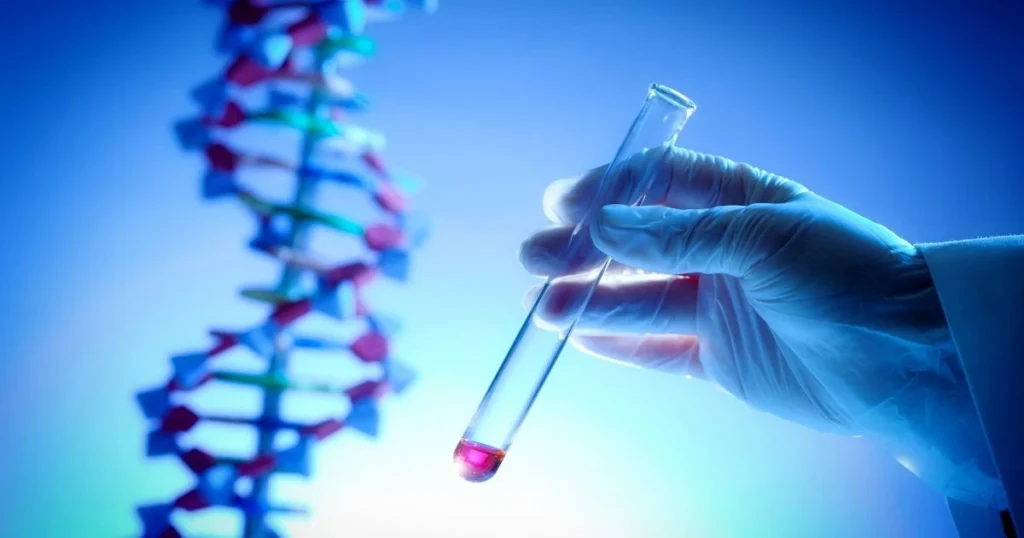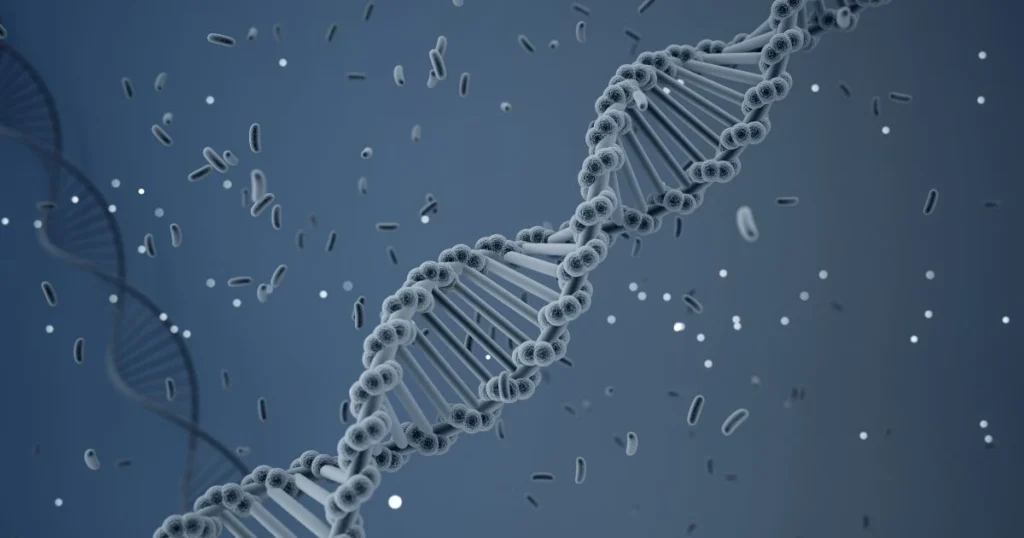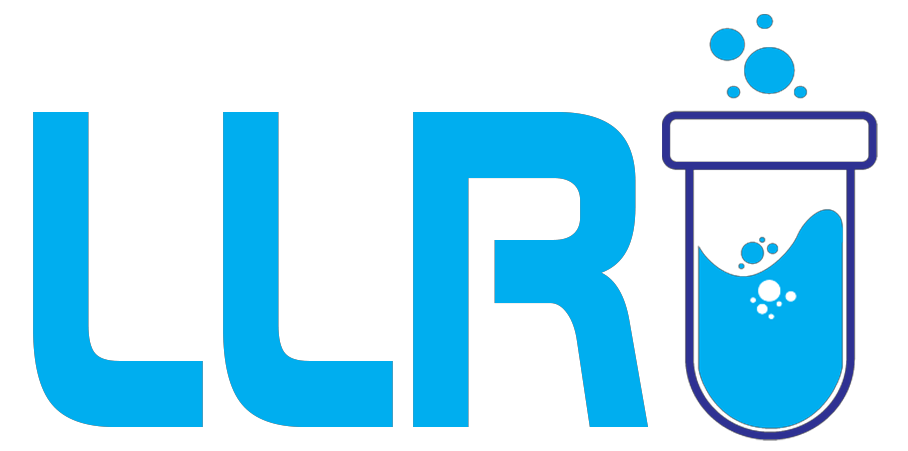Difference Between Genomics And Proteomics: The two powerful fields — genomics and proteomics — are opening new doors in research and medicine. But what exactly is the difference between genomics and proteomics? If you’ve ever been confused by these terms, you’re definitely not alone.
Genomics is all about the study of an organism’s full DNA — the blueprint of life. On the other hand, proteomics explores proteins — the molecules that actually make things happen inside our bodies. Knowing the difference between genomics and proteomics isn’t just important for scientists; it’s becoming essential knowledge for anyone stepping into biotechnology, clinical research, and healthcare innovation.
In this blog by Learning Labb Research Institute, we’ll break it all down in a simple way. We’ll also explore the application of bioinformatics in genomics and proteomics, discuss genomics and proteomics in bioinformatics, and look at how Learning Labb Research Institute (LLRI) is helping students build exciting careers with its top-notch clinical research courses.

What is Genomics?
First things first — genomics is all about the study of an organism’s complete set of DNA, including all of its genes. Think of DNA as the master instruction manual for every living thing. Genomics doesn’t just study individual genes, but how they interact and influence an organism’s growth, development, and behaviour.
According to the Human Genome Project, humans have about 20,000-25,000 genes!
What is Proteomics?
Now, flip the page. Proteomics deals with the large-scale study of proteins. If DNA is the instruction manual, proteins are the workers following those instructions to build, maintain, and repair the body.
So basically, proteomics tells us what’s happening in real-time inside the body, while genomics shows what could happen based on the DNA code.
Main Difference Between Genomics and Proteomics
Here’s a simple way to remember:
| Features | Genomics | Proteomics |
| Study Focus | Genes (DNA) | Proteins |
| Stability | Relatively stable | Highly dynamic |
| Changes | Rare (mutations) | Frequent (modifications) |
| Analytical Techniques | Sequencing | Mass spectrometry, chromatography |
The difference between genomics and proteomics lies not just in what they study, but also in how dynamic the molecules are!
Why is the Difference Between Genomics and Proteomics Important?
- Precision medicine: Tailoring treatments based on a patient’s genetic makeup and protein expression.
- Drug discovery: Targeting proteins often leads to more effective treatments.
- Disease diagnosis: Sometimes, changes in proteins reveal diseases earlier than genetic tests.
“While your DNA is your destiny, your proteins tell the story of your life.” — Dr. Leroy Hood, a pioneer in systems biology.
Application of Bioinformatics in Genomics and Proteomics
The application of bioinformatics in genomics and proteomics is like using Google Maps for a complex journey. Without it, researchers would be lost in a sea of data.
In Genomics:
- DNA sequencing generates tons of data. Bioinformatics tools help organize, interpret, and find patterns.
- Predictive modelling identifies disease-related genes.
- Personalized genomics relies on bioinformatics to tailor individual therapies.
In Proteomics:
- Identifies and quantifies proteins in complex biological samples.
- Detects protein-protein interactions using machine learning.
- Bioinformatics helps predict the 3D structure of proteins.
Thus, genomics and proteomics in bioinformatics are inseparable in today’s research world!

How Bioinformatics is Helpful in Genomics
You might be wondering — how bioinformatics is helpful in genomics exactly?
Here’s a quick list:
- Data storage: DNA sequences are massive. Bioinformatics offers databases like GenBank.
- Pattern recognition: Finds genetic mutations linked to diseases.
- Comparative genomics: Studies differences between species to understand evolution.
- Gene annotation: Identifies unknown genes and predicts their function.
Bioinformatics transforms raw DNA sequences into meaningful biological knowledge!
What is Proteomics in Bioinformatics?
Good question! What is proteomics in bioinformatics?
It’s the use of computer tools to analyze proteins — their structures, functions, and interactions. Proteomics bioinformatics helps:
- Predict the structure and folding of proteins.
- Identify post-translational modifications.
- Map networks of protein interactions (protein-protein interaction maps).
In short, it brings order to the complex, dynamic world of proteins.
Role of Bioinformatics in Proteomics
The role of bioinformatics in proteomics is like being a detective — finding clues hidden in a maze.
- Data analysis: Sorts through huge mass spectrometry datasets.
- Protein identification: Matches unknown proteins against databases.
- Function prediction: Predicts what unknown proteins might be doing.
- Network modelling: Builds maps of how proteins work together inside a cell.
The application of bioinformatics in genomics and proteomics is what makes modern biology so exciting and fast-moving!
Both genomics and proteomics have revolutionized cancer research. Genomics reveals the mutations causing cancer. Proteomics shows which proteins are malfunctioning.
In India, many Clinical Research Institutes are leading in this field. Institutions like Learning Labb Research Institute (LLRI) offer clinical research training courses that prepare students for cutting-edge jobs in genomics, proteomics, and bioinformatics.

Clinical Research Training and Courses at LLRI
If you’re dreaming of entering this world, LLRI might be your gateway!
At LLRI:
- Clinical Research Courses are crafted by real-world scientists.
- Learn about application of bioinformatics in genomics and proteomics hands-on.
- Affordable clinical research course fees compared to other institutions.
- Recognized as one of the Best Institutes for PG Diploma in Clinical Research.
- Offers extensive clinical research training in genomics, proteomics, and bioinformatics tools.
Quick pointers to remember before we wind up
- Genomics = Study of DNA and genes.
- Proteomics = Study of proteins.
- Difference between genomics and proteomics: DNA is the plan; proteins are the execution.
- Bioinformatics is essential for both genomics and proteomics.
- Institutions like LLRI are shaping the future with their training programs.
On A Final Note…
Learning the difference between genomics and proteomics gives us a peek into how life works at its most basic level. With the application of bioinformatics in genomics and proteomics, scientists can dive deeper into the mysteries of life and disease.
And if you’re serious about stepping into this exciting world, courses from top places like Learning Labb Research Institute (LLRI) could be your perfect starting point! Their clinical research training center offers everything from genomics to proteomics, ensuring you’re industry-ready. Remember — the future belongs to those who understand both the map (genomics) and the territory (proteomics)!

